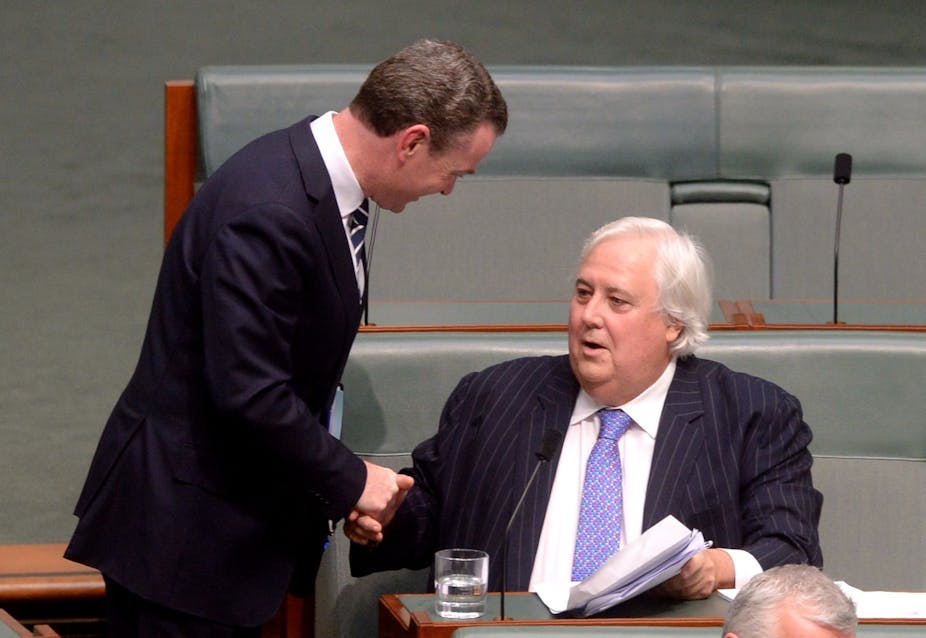The proposed changes to higher education, including the deregulation of fees, while offering potentially significant benefits, also carry significant social and economic risks. Should the bill pass in the Senate, it will be necessary to have an independent oversight body to monitor its effects and make recommendations to ensure the outcomes are positive and equitable.
Increasing the skills and capabilities of the workforce is a major national priority. We need a high-quality mass tertiary education system in which most people participate. The scale of this agenda, however, is such that the government’s share of the cost per student will almost certainly need to be lower in the future than it has been in the past.
For this reason, an increased reliance on the higher education contribution scheme (HECS) is pretty well a certainty. One way of doing this is to allow providers to set their own fees and for students to receive a government subsidy towards the cost. This is what the government’s higher education reform package is effectively about.
The other rationale for the changes is that greater competition in the market will drive more customer focus and greater innovation and specialisation, to the benefit of students and their current or prospective employers.
Oversight is necessary due to the significant risks
Whether these objectives are achieved depends on the market design. At present, the package carries serious risks.
This is partly because of the speed with which the package was put together in the face of pressure to make budget cuts to higher education. It is partly because trying to reform the higher education system, while simultaneously making significant budget cuts, carries risks in itself. And it is partly because such radical reform always carries risks.

It is because of some of these risks that the government faces challenges in getting the package through the Senate. It is also because of some of these risks that Universities Australia, on behalf of the university sector, is seeking some amendments to the package.
There is a risk that uncapped income-contingent loans may not be compatible with a fully deregulated fee system. Income-contingent loans mute price signals and may produce excessive prices – especially by long-established universities with a high level of market power. The system may result in excessive levels of bad and doubtful debt, particularly if over-pricing occurs.
Another risk is that the system will provide enhanced opportunities for already high-achieving students, and inferior opportunities to those who arguably need more support to be successful in their tertiary studies. This is because of the increased importance of the willingness to pay in determining where the money goes. As a result, those institutions that focus on providing outstanding opportunities for students from disadvantaged backgrounds may be at a disadvantage.
This in turn produces the risk of greater stratification of the university system. Older established universities, which have enjoyed many decades of public investment in their infrastructure and have built up significant market power through strong brands, may be able to exploit that market power in ways that may result in an overseer recommending changes to the market design.
Less established universities, that have grown up to support the expansion of tertiary education to broader demographic groups, have had substantially less investment in their infrastructure and have not developed such strong brands or market power. They may be in a weaker position to achieve their important missions.
Another risk is that a disproportionate amount of the additional funds generated from higher student contributions from undergraduates will go into university research, rather than improving the student experience and student outcomes.
This is because the major rankings of universities are determined largely by research performance measured by things like citations in internationally peer-reviewed articles. While there are strong arguments for greater investments in research, this is not the right way to achieve that outcome.
The transition to a highly deregulated environment could involve a lot of “fall-out” because insufficient attention has been given to transitional issues in the design. These include: transitioning to the new market carefully so that public money does not get wasted; enabling the institutional changes; and removing the regulatory constraints that will enable universities to operate effectively, and with the necessary agility, in the new environment.
A further risk is that while the higher education system will expand, vocational education won’t. Bringing sub-degree higher education programs into the demand-driven system will be a positive move to promote stronger pathways into higher education for those who need additional preparation, but there should be simultaneous reform and a more integrated approach with vocational education. In due course, this will need federal-state reform.
A final risk is that students will have insufficient information to make informed choices about where to put their money in the new system. What they need to know is which providers will add the greatest value to their futures and which providers represent the best value for money.
They won’t get it right the first time
As the government continues to negotiate with the cross-benchers in the Senate, it is to be hoped that these important issues will be taken into account in any amendments to the legislation.
A wide range of potential measures to ameliorate these risks has been put forward. These include modifications to proposed HECS repayment arrangements, a more gradual transition process and having a structural adjustment fund to support adjustment of institutions to the new environment.
It is very unlikely that, even with modifications of this kind, the parliament will get the design right first time. The outcome could even be made worse by last-minute deals that are not well thought through and add to the risks outlined above. It will be important to have an independent oversight body to monitor and review the best way to use public funding in tertiary education to achieve the efficiency and equity outcomes that will be good for the economy and society, for business and for the workforce.

